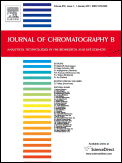
“Prominent motor deficits (e.g., chorea) that typify Huntington’s disease (HD) arise following a prolonged prodromal stage characterized by psychiatric disturbances. Apathy, a disorder of motivation characterized by diminished goal-directed behavior, is one of the earliest and most common psychiatric symptoms in HD, but the underlying neurobiology is unclear and treatment options are limited.
Alterations in the endocannabinoid (eCB) and dopamine systems represent prominent pathophysiological markers in HD that-similar to motivational deficits-present early and decline across disease progression. Whether changes in dopamine and eCB systems are associated with specific behavioral impairments in HD and whether these deficits are amenable to viable treatments is unknown.
Here, we show that dopaminergic encoding of effortful drive progressively declines with age in an HD mouse model, and is restored by elevating tissue levels of the eCB 2-arachidonoylglycerol (2-AG) through targeted inhibition of its enzymatic degradation.
This work supports aberrant dopaminergic encoding of reward as a neurobiological correlate of apathy in HD, and indicates that cannabinoid receptor-based therapies may benefit neuropsychiatric care for HD.”





